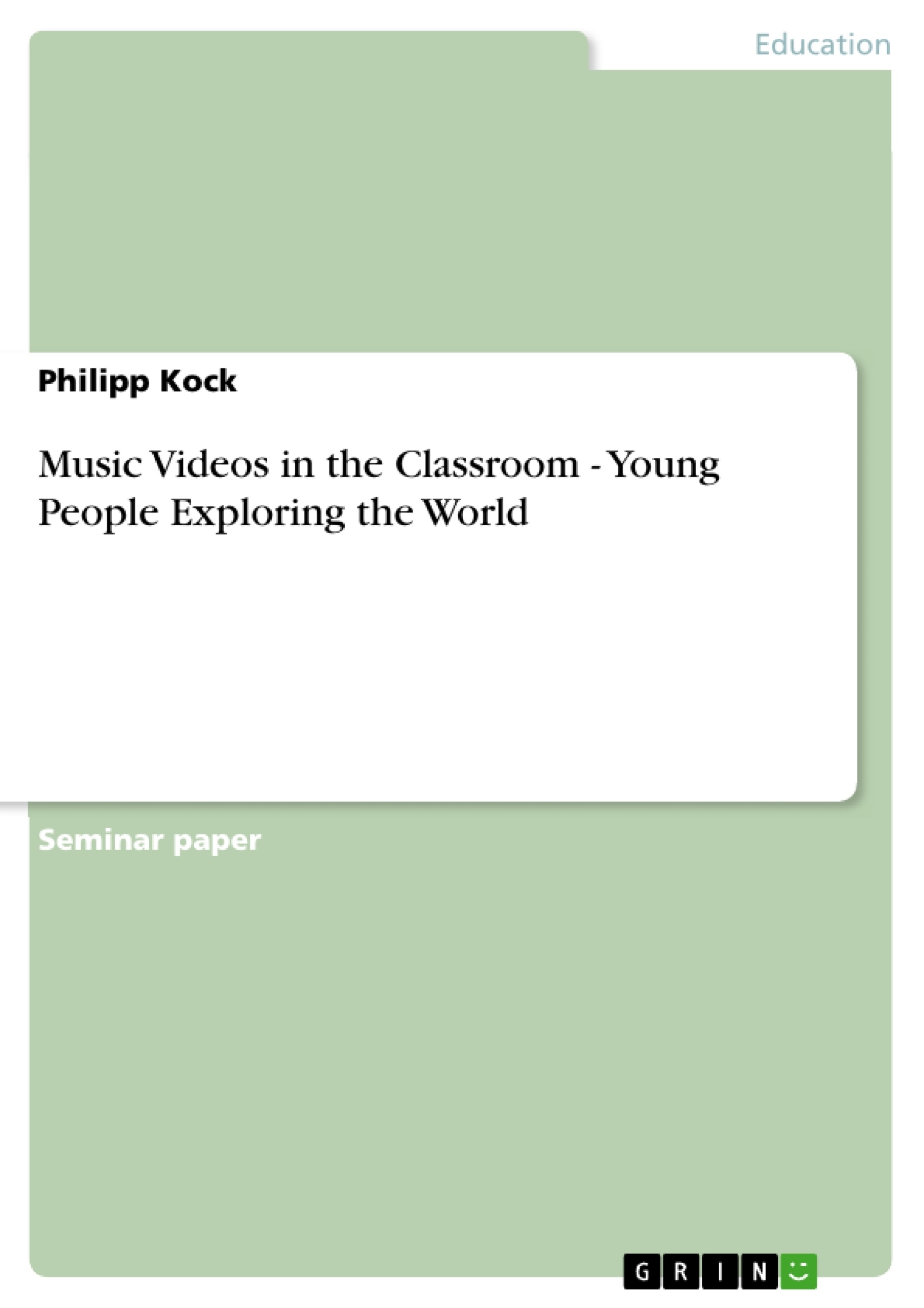1. Introduction
Music videos are an important part of the lifestyle of many youths, they have been spread
over the whole world by the television channel MTV (Music Television)1 and they have
become an essential aspect of the popular culture. Obviously, the Hessian curriculum has
realized the importance of music videos: The topic "Young People Exploring the World"
("Jugendliche und ihre Welt") for 11th grade includes the sub-topic "Culture and Media"
("Kultur und Medien")2. This sub-topic deals with all sorts of pop culture, (music, videos,
literature, advertisements, fashion, sports, etc.).
Music videos are excellent for matters of foreign language education, they provide
authentic material3, which is a welcome variation for many pupils who are only used to
artificial learning materials, and they are very interesting for pupils because they are part of
their everyday life. Therefore, music videos provide a brilliant opportunity for the pupils to
discuss and analyse. Through thorough analysis of music videos, the pupils will become
aware of how music videos are made and which impact they can have on us, and also
which ethical values they propagate (as well by the lyrics of the specific song as well by
the composition of the video itself) or in which ways they reflect our society.
It is important that the pupils are allowed to choose their own music videos, because then
they will be more motivated as if the videos were selected by the teacher. However, the
teacher should become acquainted with the specific video before it is presented to the
class by the pupil because there are, of course, music videos, which are not suitable (for
example, because the content could be too violent or sexual to be presented in the
classroom or the video could be too long, it should not exceed 5 minutes for obvious
reasons).
For a fruitful analysis and discussion, the pupils need to do a bit of theory, the teacher
should give a brief introduction to the basics of video-making, e.g. camera perspectives,
cutting techniques, etc., so that the students understand that in a music video (just like in a
movie) everything has a purpose and a certain effect on the spectator. Equipped with this
fundamental knowledge, the students are enabled to analyse their specific music video on their own and to present them to the class, and the rest of the class can discuss or add
aspects which the presenter may not have found. In this termpaper, I will present an exemplary teaching unit...
Inhaltsverzeichnis (Table of Contents)
- Introduction
- Didactic analysis of the topic
- Music videos in foreign language teaching
- Learning possibilities
- Employing the New Media for this topic
- Requirements for the students and for the learning objectives
- Comments on the individual lessons
- Lesson 1 - propaedeutics part 1
- Lesson 2 - propaedeutics part 2
- Lesson 3 - propaedeutics part 3
- Lesson 4 - propaedeutics part 4
- Lesson 5 - start of the presentations
Zielsetzung und Themenschwerpunkte (Objectives and Key Themes)
This term paper presents an exemplary teaching unit about music videos in foreign language teaching, focusing on the learning possibilities and skills that should be conveyed to the pupils. The main objective is to explore the use of music videos as authentic materials, providing a welcome variation to typical school-learning materials. The teaching unit, including a plan for every lesson, is also outlined. The process plans for each lesson and some of the required learning materials can be found in the appendix.
- The importance of authentic materials in foreign language education
- Music videos as engaging and motivating learning tools for students
- Analyzing the composition and aesthetic impact of music videos
- Exploring the relationship between music videos and cultural meaning
- Developing fluency in the target language through discussions and presentations
Zusammenfassung der Kapitel (Chapter Summaries)
The introduction provides an overview of the importance of music videos in today's youth culture and how they can be utilized for foreign language education. It highlights the challenges of engaging students with traditional learning materials and advocates for using authentic materials, such as music videos, to stimulate interest and motivation.
The didactic analysis of the topic discusses the advantages of music videos in foreign language teaching, focusing on the learning possibilities they offer. These include enhancing fluency in the target language, improving presentation skills, and fostering understanding of the cultural meaning and aesthetic impact of music videos. The chapter also outlines the necessary requirements for students and learning objectives.
Schlüsselwörter (Keywords)
This text focuses on the utilization of music videos as authentic learning materials in foreign language teaching, emphasizing their role in enhancing student engagement, developing fluency in the target language, and fostering critical analysis of visual and cultural elements. The key themes include authentic materials, learning possibilities, music video analysis, cultural meaning, and stylistic differences between music genres.
- Quote paper
- Philipp Kock (Author), 2009, Music Videos in the Classroom - Young People Exploring the World, Munich, GRIN Verlag, https://www.grin.com/document/159631



